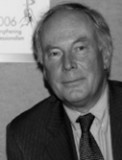HealthManagement, Volume 15 - Issue 1, 2015
What are the key benefits of implementing tomosynthesis in screening programmes?
The key benefits are the higher sensitivity (i.e., the higher cancer detection rate) and the higher specificity (i.e., the lower recall rate) using this new technique.
What the key points from the Norwegian experiences that you will be presenting?
My experience from the Norwegian experience is based on the preliminary results from the Oslo Tomosynthesis Screening Trial (OTST)1. A main important finding is the significantly higher cancer detection rate. The additionally detected cancers are all invasive cancers, and the number of ductal-carcinoma in-situ (DCIS) is practically unchanged. A further important finding is that the use of synthetic 2D images (instead of full-field digital mammography FFDM 2D) in combination with tomosynthesis gives comparable results with FFDM 2D + tomosynthesis. Consequently, the combination 2D+3D is possible with a radiation dose comparable with conventional 2D FFDM.
What are the major challenges in implementing tomosynthesis into breast screening programmes? How should these be addressed?
The “cost-benefit” aspect is important. Two recently published papers have, however, shown that tomosynthesis seems to be cost-effective2,3. The examination time (for the technologist) must not be much longer than for the conventional 2D FFDM carried out today, but Hologic offers fast tomosynthesis examination time with only some very few seconds longer than FFDM. The combination 2D+3D needs approximately the double interpretation time by the radiologists (from about 25 sec. to 60 sec. per examination). An efficient hanging protocol is thus mandatory. The radiation challenge is solved using synthetic 2D images reconstructed from the 3D (tomosynthesis) data set.
What more evidence is needed to bring screening with breast tomosynthesis into reality?
So far, there have been published some few retrospective studies from US and three European prospective trials on tomosynthesis in breast cancer screening. The results of nearly all of these studies are similar, demonstrating a higher cancer detection and a lower call-back rate. The three prospective European trials are very different in study design - although the results are comparable! Some people might want to have these results confirmed in a couple of more prospective studies before making the final decision. What is important is the fact that tomosynthesis is not a new “modality” but should be considered as a better “technique” (i.e., a better mammogram!). Implementation of new “modalities” like ultrasound and MRI would be much more complicated, whereas tomosynthesis (as a better tomogram) can easily be implemented in the existing screening programs.References:
1. Skaane P, Bandos AI, Gullien R, Eben EB, Ekseth U, Haakenaasen U, Izadi M, Jebsen IN, Jahr G, Krager M, Niklason LT, Hofvind S, Gur D, Comparison of Digital Mammography Alone and Digital Mammography Plus Tomosynthesis in a Population-Based Screening Program, Radiology April 2013.
2. Lee CI, Cevik M, Alagoz O, Sprague BL, Tosteson AN, Miglioret ti DL, Kerlikowske K, Stout NK, Jarvik JG, Ramsey SD, Lehman CD. Comparative Effectiveness of Combined Digital Mammography and Tomosynthesis Screening for Women with Dense Breasts, Radiology October 28, 2014.
3. Bonafede MM, Kalra VB, Miller JD, Fajardo LL, Value Analysis of Digital Breast Tomosynthesis for Breast Cancer Screening in a Commercially- Insured US Population, ClinicoEconomics and Outcomes Research January 12, 2015.
4. Friedewald SM, Raf fer ty EA, Rose SL, Durand MA, Plecha DM, Greenberg JS, Hayes MK, Copit DS, Carlson KL, Cink TM, Barke LD, Greer LN, Miller DP, Conant EF, Breast Cancer Screening Using Tomosynthesis in Combination with Digital Mammography, JAMA June 25, 2014.


